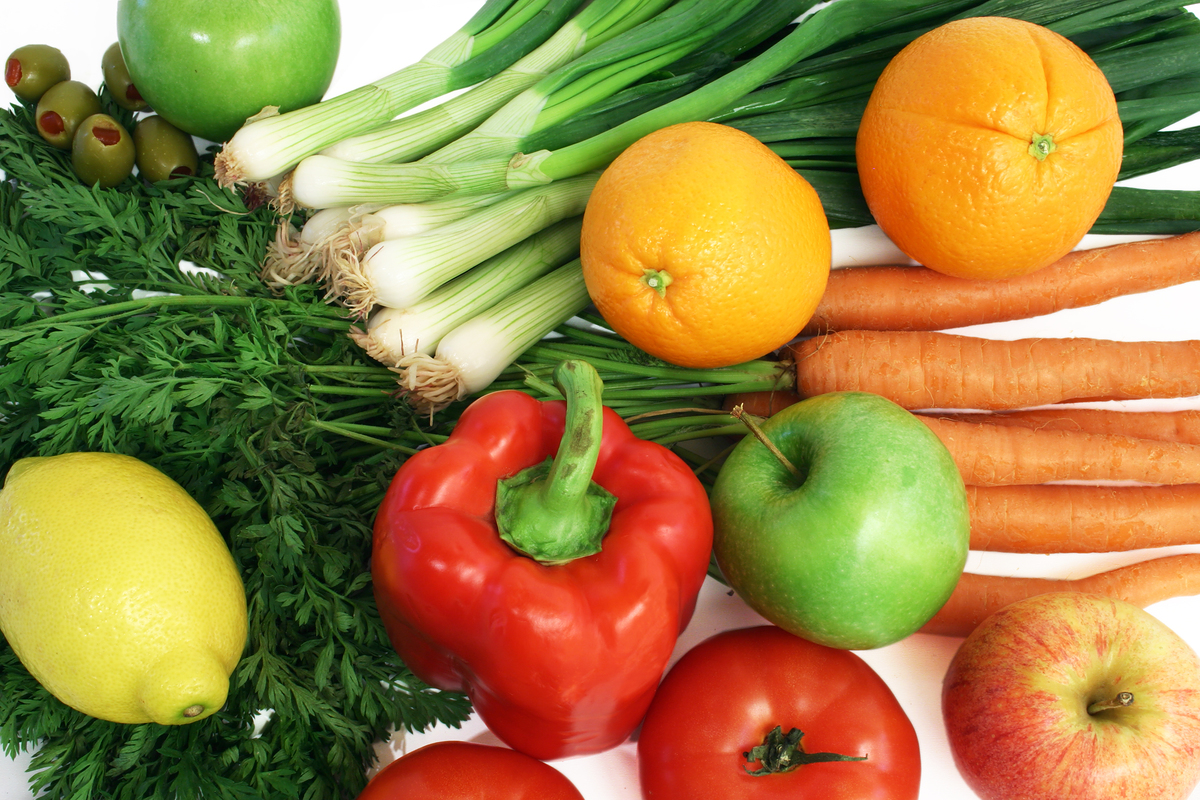
Fat Content in Vegetables
srijeda, 26. lipnja 2013.
Nature's remedies: Do Fruits & Vegetables Contain Fat?
Using the botanical
definition, a fruit is the ripe ovary of a seed-bearing plant. A
vegetable is the leaves, stems, roots and tubers of a plant, or any part
of the plant that is not the fruit. An avocado, a tomato, certain
types of nuts and a bell pepper are all considered fruits. While most
vegetables contain only trace amounts of fat, a few fruits contain
significant amounts of it.
Typically,
the only fat in vegetables is fat added during preparation or cooking.
For example, a 5.3-oz. potato has zero grams of fat, but in a 4-oz.
serving of french fries, there are 19 g of fat. To minimize the amount
of fat in your diet, prepare vegetables using a small amount of fat,
such as olive oil, or steam vegetables when possible. When dining out,
select baked, steamed, stir-fried or boiled vegetables. Avoid
vegetables that have been deep fried, like french fries.
Several
fruits contain fat, including tree nuts, olives and avocados. Olives
are a rich source of monounsaturated fats, a heart-healthy fat that may
help you lower your cholesterol. In a 100 g serving of olives, there
are 15 g of fat and 145 calories. Use olives sparingly to enhance the
flavors in fish, to add variety to a salad, or eat them plain. And when
possible, use olive oil to reap the benefits of this heart-healthy
fruit.
Avocados
are also a rich source of monounsaturated fat. In half of an
average-sized avocado, there are 14 g of fat and 145 calories. Avocados
are best when the flesh is green and the fruit is firm yet will give to
gentle pressure. Use avocados for mashing, as in guacamole, for
spreading on toast, slicing and adding to sandwiches or salads or eat
plain with a dash of salt and pepper.
Tree
nuts, including almonds, walnuts and cashews, contain a significant
amount of fat. Walnuts are a rich source of polyunsaturated fat, a
heart-healthy fat, and almonds and cashews are a rich source of
monounsaturated fats. Like olives and avocados, nuts are a high-fat,
high-calorie food best eaten in small quantities. In a 1-oz. serving of
almonds, there are 15 g of fat and 170 calories. Nuts contain a
significant amount of protein, making them ideal to have as a healthy
snack. Try spreading a thin layer of almond or cashew butter on toast
or crackers. Or eat a small handful of almonds for a mid-afternoon
snack.
Fruits
and vegetables contain many health benefits. Most fruits and
vegetables are rich sources of fiber, are low in calories, and contain
vitamins and minerals. Green vegetables are generally rich sources of
vitamin A, C and K and folate and minerals such as iron and calcium.
Orange and red fruits and vegetables are rich sources of vitamin A, beta
carotene and vitamin C. Citrus fruits are a good sources of vitamin C,
folate and potassium. Berries are rich sources of vitamin C. Eating a
rainbow of colors of fruits and vegetables is the best way to ensure
that you are reaping all of the health-promoting benefits of fruits and
vegetables.
Pretplati se na:
Objavi komentare (Atom)






0 komentari:
Objavi komentar